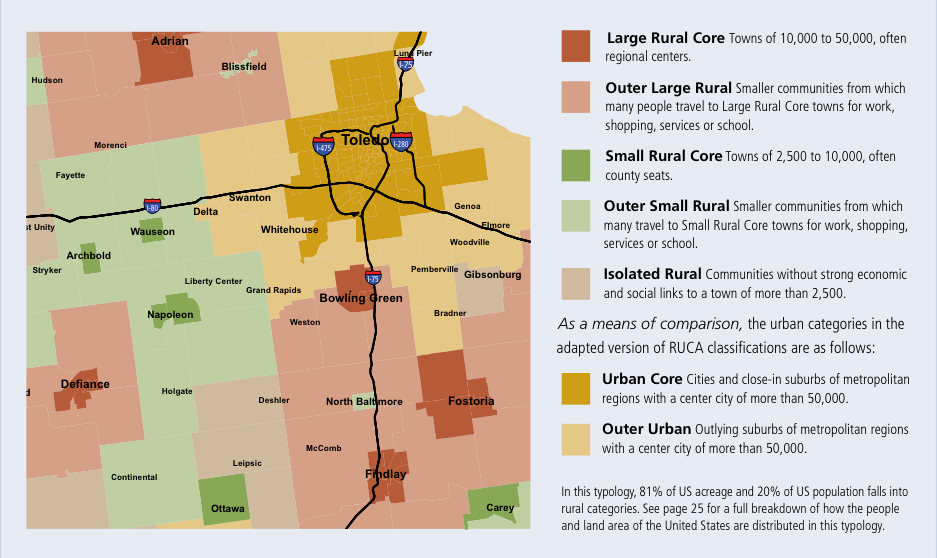RAILS TO TRAILS CONSERVANCY
Executive Summary
Some commentators and decision-makers have long assumed that biking and walking are strictly a “big city” phenomenon, and that rural America can’t benefit substantially from bicycling and pedestrian infrastructure. Previous research has found that rural Americans walk and bicycle at 58 percent of the rate that urban Americans do. However, the most recent data from the U.S. Department of Transportation (DOT) tell a different story.
For some categories of rural communities, active transportation—human-powered mobility, including biking and walking—is as common as in urban areas. The share of work trips made by bicycle in small towns is nearly double that of urban centers. Further, biking and walking count as significant means of transportation all across the countryside. In coming years, active transportation can play an even bigger role in making small town America more attractive for young families and business investment—improving economic vitality, public safety and overall health in smaller communities in every U.S. region.
This new information has several critical if not surprising policy implications.
Federal investment in biking and walking benefits rural areas as much or more than urban centers. Rural areas receive almost twice as much funding per capita as urban areas from the federal Transportation Enhancements (TE) program. There is a special need for this federal role because smaller communities are often unable to make necessary community improvements without federal support.
Active transportation programs directly benefit America’s youth, and thus can help rural areas to retain talented young people and families. Safe Routes to School, TE and other programs have made dramatic differences in the safety, health and quality of life for numerous children and families in rural communities from Florida to Idaho.
Active transportation is a smart investment relevant to all Americans at a time when our nation grapples with budget deficits, high unemployment and rising energy costs. Biking, walking and trail projects are very cheap compared to road projects and can reduce the need for costly new highways. Active transportation creates more jobs per dollar than high- way projects(5), and attracts business investment.
Read full report (RailsToTrails.org): Active Transportation Beyond Urban Centers
About Rails to Trails Conservancy
railstotrails.org
“Rails-to-Trails Conservancy is a nonprofit organization based in Washington, D.C., whose mission it is to create a nationwide network of trails from former rail lines and connecting corridors to build healthier places for healthier people. Rails-to-Trails Conservancy serves as the national voice for more than 150,000 members and supporters, 20,000-plus miles of rail-trail throughout the country, and more than 9,000 miles of potential rail-trails waiting to be built.”
Tags: Bicycling, Rails To Trails, suburbia, Walkability







 RSS Feed
RSS Feed